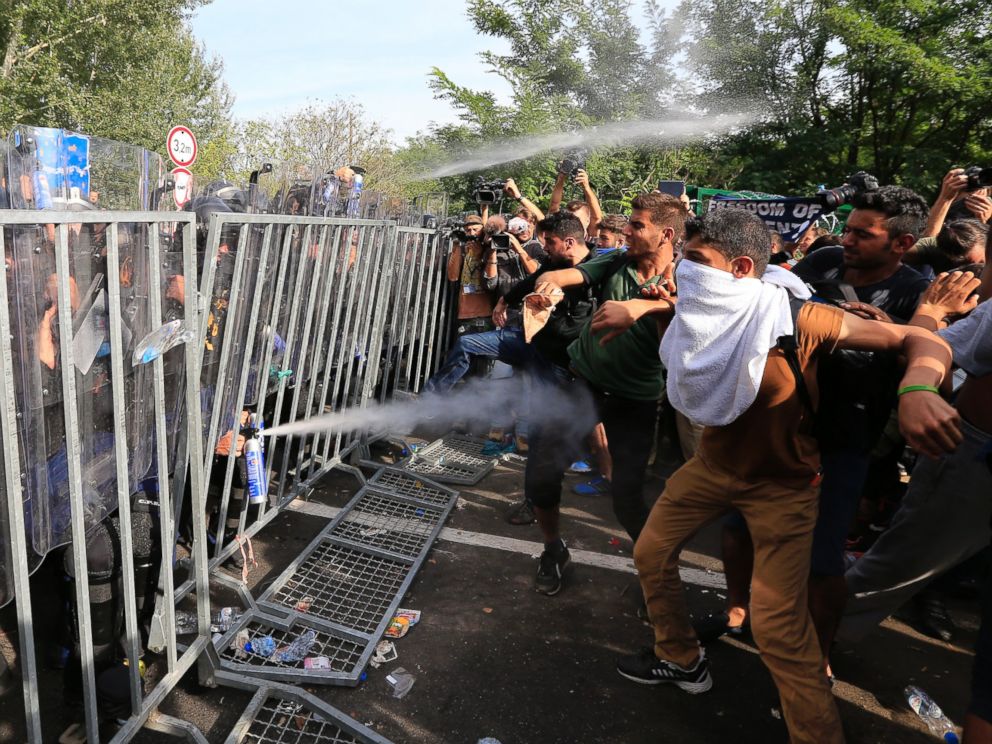 Migrants and police at the Hungarian border (Trollman Capote / Flickr)
Migrants and police at the Hungarian border (Trollman Capote / Flickr)
The Global Fragility Act One Year Later
This article serves as an update to the October 2 ASP article on the Global Fragility Act (GFA).
December 19 marks the one-year anniversary of the passage of the Global Fragility Act (GFA). On paper, the GFA sounds noble: a new method of ensuring a world free of violence and conflict through preventive diplomacy rather than military intervention. However, the United States is still in the uncertainty stage. As per the stipulations of the GFA, a Global Fragility Strategy (GFS) was to be created within 270 days of the act’s passage. The strategy mandates the selection of five target countries, each with its own individualized 10-year plan for empowering citizens and decreasing the chances of violence and conflict. However, rather than an individualized report, a general GFS outline was created; no individual countries nor leaders were chosen. The promise was then made to select countries by the end of October, but this did not come to fruition either.
The GFA states that:
“…[not] later than one year after the date of the enactment of this Act, the President, in coordination with the Secretary of State, the Administrator of the United States Agency for International Development, the Secretary of Defense, and the heads of other relevant Federal departments and agencies, shall submit to the appropriate congressional committees ten-year plans to align and integrate under the [GFS]…”
It is easy to prescribe to the President, State Department, and other federal agencies to “hurry up and think of something.” However, the current lack of a plan is proof that engaging in this new form of diplomacy and international development is a Herculean task of research and strategy. Since the creation of the GFS in September 2020, a considerable number of events have occurred in currently fragile states. A school attack in Nigeria resulted in the disappearance of over 300 schoolboys. The Ethiopia/Tigray conflict resulted in the deaths of thousands. Members of Lebanon’s government have been detained, accused of negligence in the Beirut explosion that killed hundreds and collapsed the country’s government. The effects of COVID-19 on fragile states and the consequences that may come of natural disasters make the formula of determining how close fragile states are to resorting to violence even more difficult.
Whether or not a more specific GFS is developed before the end of the Trump presidency, it behooves the incoming Biden administration to make the most of the GFA and use it to kickstart a new era of U.S. diplomacy.
Reconnecting America with the World
The diplomacy inherent within the GFA aligns well with the incoming administration’s goal to reconnect America with the world—if it gets serious about its commitments. An unfulfilled promise of a complete GFS gives the impression that America is biting off more than it can chew when it is unable to declare what it actually wants to do. Committing to stabilizing five countries for a decade appears unlikely if there is difficulty adhering to self-prescribed deadlines before the hard work of implementing these country-specific programs even begins. Furthermore, the GFA is coming fresh on the heels of U.S. involvement in Iraq and Afghanistan, two examples of grand plans not coming to fruition. Perhaps stabilizing countries outside of wartime and without the use of military intervention is what is needed to reduce America’s history of overpromising and underdelivering.
U.S. Success Can Inspire Others
The U.S., the United Nations (UN), and individual NGOs cannot be the only entities which engage in preventive diplomacy. Successful implementation of a GFS could make the U.S. a model of what stabilizing fragile states looks like, thus possibly inspiring other countries to create similar or complementary strategies. The Fund for Peace’s Fragile States Index 2020 lists 55 countries as High Warning, Alert, High Alert, or Very High Alert. Selecting five countries for the GFS is a good start, but barely scratches the surface. Other countries have the capacity to engage in their own preventive diplomacy, demonstrated by their ability to commit significant funding to foreign aid. In fiscal year 2019, Norway, Sweden, Luxembourg, Denmark, and the United Kingdom each exceeded the recommended percentage of GNP devoted to foreign aid.
Inspiring other countries to engage in preventive diplomacy is important because state instability causes populations to flee to more stable countries. Considerable migration and displacement in the past few years have resulted in immigration and asylum crises in the EU and even India. There has been a constant struggle to figure out a solution to migration crises; COVID-19 has made the situation even worse. It is not too late to turn around America’s stuttering start to the GFA. Each stable and wealthy country must play a role in the rejuvenation of fragile nations.
Government-led preventive diplomacy is different from military intervention or NGO assistance. Just like with extremist ideology, the “problem” is not a clear united front, but rather an unseen force to contend with. In this case, the problem is a probability; the chance that violence will occur in the future. Unlike NGOs, which typically specialize in a region or issue, governments tend to tackle many issues simultaneously. Multi-tasking will then hinder the chances of successful execution of aid efforts—and inspiring other countries to assist in helpful and complementary ways can help ease the burden by redistributing tasks and bringing needed skills and resources to the table. Although GFA’s beginnings are clearly not going as planned, its failures in its infancy should not stand in the way of a new future of U.S. diplomacy.





